Introduction to the production area of grinding degree by different taste treatment method of Yejia snow coffee
Yejasuefei is one of the most famous boutique coffee producing areas in Ethiopia, and its washed Yejasuefi coffee is the entry bean for the world to enter into boutique coffee. Of course, if you ask what the coffee tastes like, you will definitely think of the bright and fresh notes of jasmine and citric acid. The rations and beans washed in front of the street have always been very popular with everyone!
Yejia Xuefei coffee producing area
Ethiopia is the birthplace of coffee, the flavor of its coffee producing areas is different, and it is also a place of coffee treasure that people can constantly explore. The flavor of the Yejashafi coffee producing area is so fascinating and has a lot to do with its climate. Yegashafi is a small town in Ethiopia that is part of the Sidamo region, but because of its good quality, it is subdivided into its own micro-production areas. 1700-2100 meters above sea level, it is one of the highest coffee producing areas in the world and is synonymous with Ethiopian boutique coffee. Lake Turkana, Lake Abaya and Lake Chamo bring rich water vapor here. The Rift Valley, represented by Misty valley, is foggy all the year round, with a gentle breeze, cool and humid, and thousands of coffee trees thrive. Qianjie believes that it is such an environment that gives birth to Yejia Xuefei's unique flower and fruit fragrance, unpredictable and unique flavor.
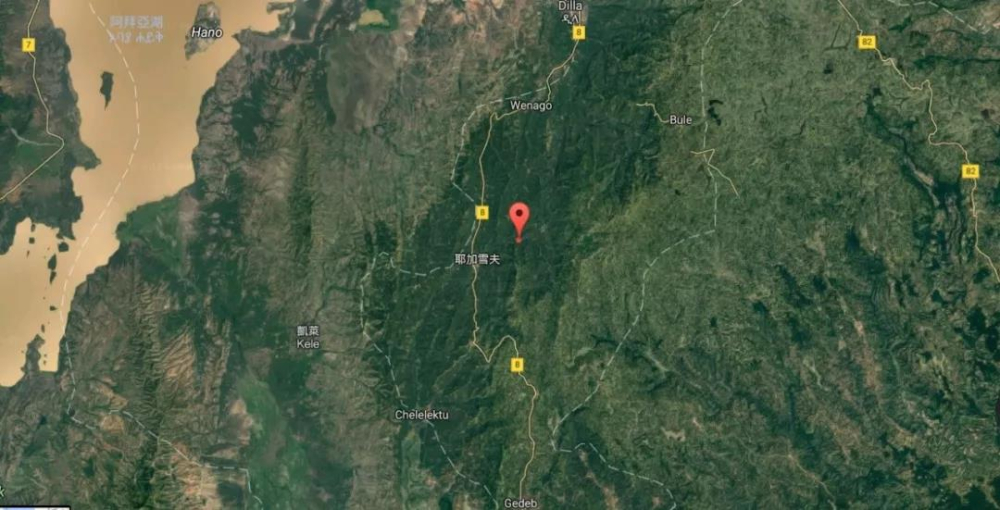
Yejashafi Coffee is considered to be one of the best coffee in the world. Almost every household here grows coffee beans, and in the relatively few large plantations here, farmers generally grow them in their own fields or yards, mixed with other crops, so as to ensure a stable income throughout the year. In June 2002, YCFCU, a cooperative alliance of coffee farmers, was established in Yejasuefe producing area, which has 28 member cooperatives. A cooperative is about the size of a village. Farmers can harvest coffee and cherries and send them to the nearest cooperative to deal with raw beans. After the harvest season, the coffee fruit is sold to the cooperative for processing, so the coffee origin information is generally the name of the cooperative processed.

There are three small producing areas Wenago, Kochere and Gelena Abaya next to Yejashafi, which produce coffee with a flavor similar to that of Yega Chefe, so Kochere is also classified as Yega Sheffei.
Kochere is the 77 Woreda (Ethiopian administrative region) of SNNPR in Ethiopia. In the field of coffee, Cochelle is part of Gediyo in Yirgacheffe and is one of the most important producing areas of Yirgacheffe. Cochell can also be divided into several micro-producing areas, and the coffee produced in the region is sometimes named after the source town (such as Xuelitu Chelelektu or Danbo Teklu Dembel), the processing plant (such as Danbo processing plant Teklu Dembel and this batch of Alim processing plant) or micro-area (such as Banko Gutiti). The source of the batch is named in a more specific way, which is in line with the current trend of coffee about traceability. Of course, the stronger the tracebility batch, the more specific the source. The higher the stability and recurrence rate of the flavor each year, the higher the price.
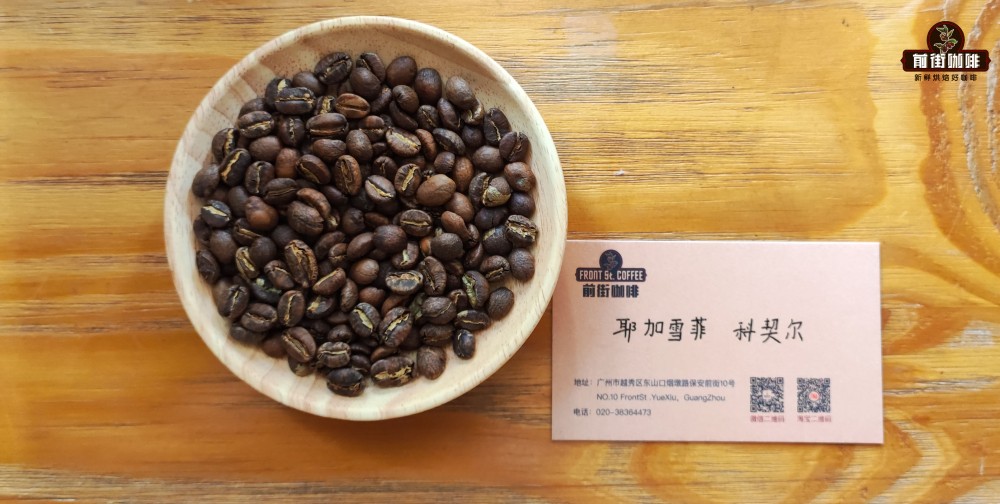
Yega Ficher Coffee Coffee on the front street is washed.
Yega Sheffield Red Cherry Project
What is the Red Cherry Project? In order to improve the income of local farmers in Ethiopia and the quality of coffee, the Dutch trading company Trabocca BV launched the Red Cherry Project (OPERATION CHERRY RED PROJECT) in 2007, mainly aimed at some high-altitude producing areas such as Yegashafi, Ethiopia, to improve the treatment techniques such as washing, semi-washing and solarization, with the participation of professional cup testers, and the harvest season will set different coffee harvests for different microclimate areas. Only 100% ripe red coffee cherries must be harvested and the yield is about 1500-3000KG. The financial support provided by Trabocca, new hardware equipment and production knowledge and technology have greatly improved the quality of coffee beans in the Yegashafi region and even the entire Ethiopian country, which in turn has higher coffee prices, thus increasing the income of farmers. Such as Qianjie coffee in the sun Yejiajiafei red cherry coffee is very popular!
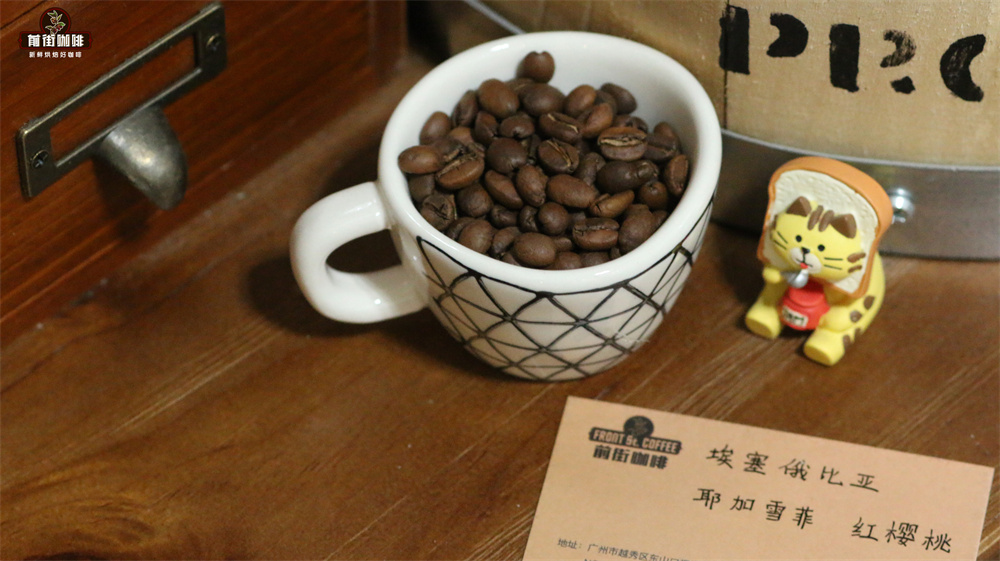
Yejia Coffee Variety
Careful friends will find that Yejia Xuefei coffee beans are petite, but they are gentle and delicate, sweet and lovely. As the hometown of coffee, thousands of years of planting history and processing tradition in Ethiopia have created high-quality washed Arabica beans. Ethiopia is the place of origin of coffee, and there are many varieties of coffee. Up to now, nearly 2000 varieties (including 1927 native varieties and 128imported varieties) have been recorded in Ethiopia; on the one hand, it is difficult to identify and classify them; on the other hand, the Ethiopian government is reluctant to disclose information about these varieties for reasons of protection. Therefore, at present, the common varieties of Ethiopian coffee beans on the market are called Heirloom native species, that is, "native species".
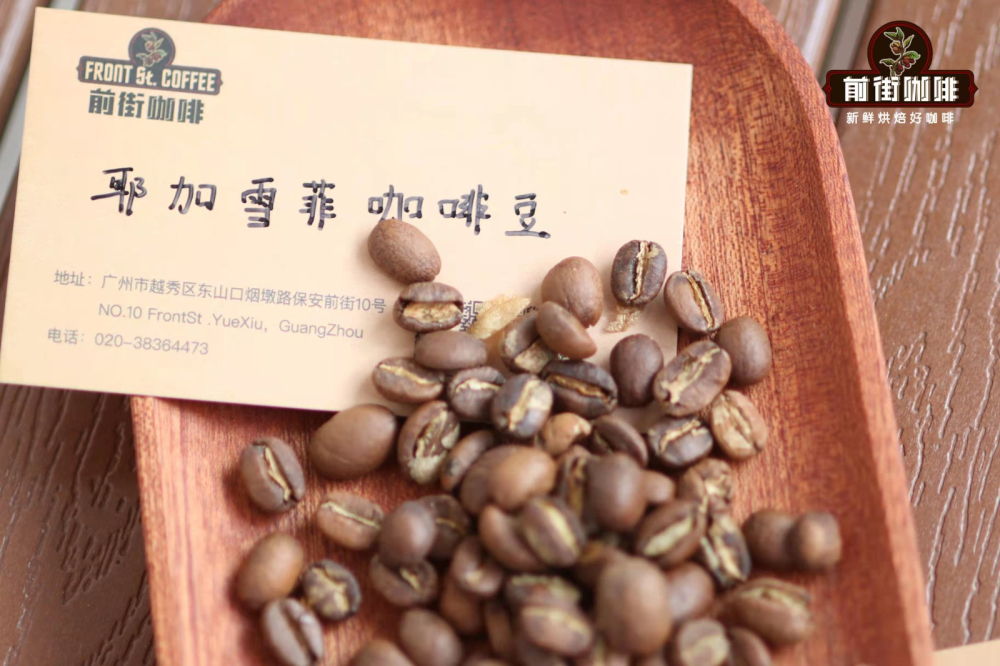
Yejia Xuefei coffee bean treatment method
Washed Yega Xuefei coffee has entered everyone's line of sight, do you think that all the coffee in Yejia Xuefei producing area is washed? Qianjie told everyone: no. In fact, Yejasuefei coffee is the oldest method of sun treatment, but in 1972, Ethiopia introduced Central and South American washing technology to improve the quality of coffee, and Yega Xuefei is the region with the most abundant water resources in Ethiopia. Therefore, this treatment also makes the jasmine and citrus aromas of Yega Xuefei clearer and brighter. It is precisely because of this that Yega Xuefei has become the representative of the world's boutique coffee. Since the 1970s, this area has become the most popular water-washed bean producing area in Ethiopia.

However, in the 21st century, the sun technology has gradually improved, and amazing sun beans have been introduced frequently. This is thanks to Bugsy, a coffee trader in Yejassefi, who misses the traditional flavor of sun-dried beans and can't bear to be replaced by water washing, so he improves the treatment of sun-dried beans to improve the flavor and reduce the proportion of defects.
Washing treatment process
1. First of all, coffee farmers will pour all the harvested coffee fruit into the water, so that the bad and defective coffee beans will surface and sink to the bottom of the water is the quality of coffee fruit, and this operation also greatly reduces the time wasted by picking one by one.
two。 Put the screened coffee fruit into a peeling machine to remove the skin and flesh, and after removing these coffee fruits, there will still be a layer of pectin on the surface of the coffee fruit, so wash away the adhesive on the surface of the coffee fruit with a lot of water.
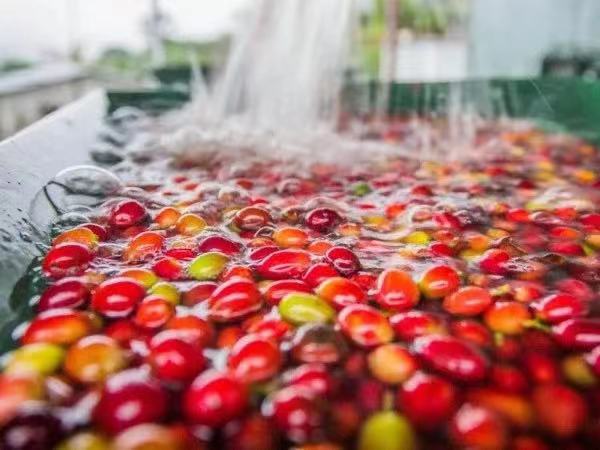
3. The next step is to use fermentation to completely remove the pectin, which takes about 18 hours, but after the fermentation is completed, the fermentation bacteria adhere to the surface of the coffee fruit, so it needs to be washed with a lot of water again, like this step. Getting 1 kilogram of coffee beans requires 40 to 50 kilograms of water, which Qianjie thinks is a very large number. This is why water washing cannot be adopted in dry countries.
4. Washed coffee beans can be dried, some areas will be directly taken outside to dry, and some more developed producing areas, will be sent to the treatment plant to use machine drying, so that the water content of coffee is as low as 11%.
5. Finally, the dried coffee beans are stored and packaged for sale and export.
Process of solarization treatment
After the opening of the red cherry project, Trabocca purchased new sun drying racks and sunshade nets for Yejia Xuefei and other producing areas in 2008-2009, plus only harvested full-grained red fruits, which were turned manually throughout the day, in order to evenly dry coffee cherries until the water content of raw coffee beans reached 11-12%, then the shell can be removed and packaged for storage.
1. The first step is to pick the ripe coffee fruit, and then select the defective, overripe or moth-eaten coffee fruit through manual screening, leaving good beans. This is also most of the reasons why the appearance of coffee beans can be more uniform and good-looking in the front street store.
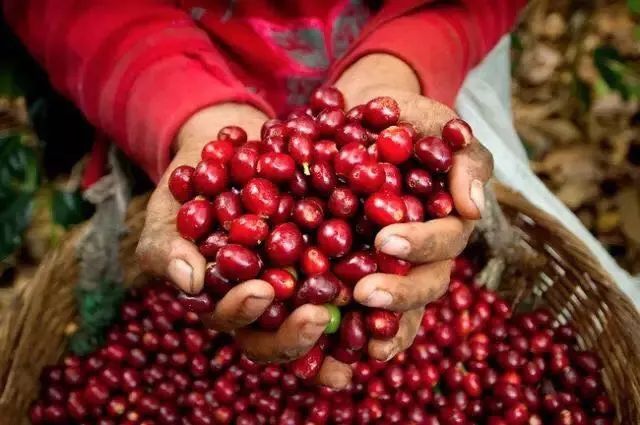
two。 After manual screening, the good fruit will be sent to the drying place for drying, of course, different coffee producing areas use different drying racks, some may be tarpaulins, high beds or cement floors, etc., with an average drying time of 27-30 days. The drying process is not completed until the moisture content of coffee is reduced to 11%.
3. This step is also a critical step. After drying, the coffee fruit will be sent to a special processing plant for peeling and shelling, and even polished, so that the pulp and other parts of the coffee fruit will fall off before getting the real common coffee beans.
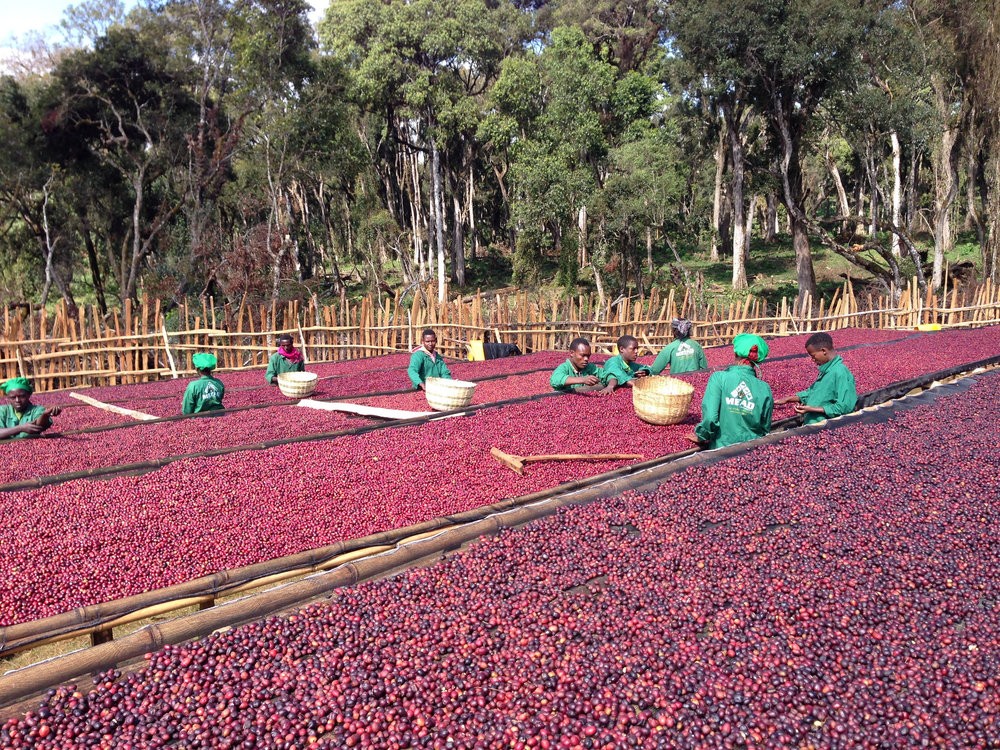
4. After peeling, raw coffee beans will be screened again to remove coffee beans that do not look good. This is because overdried coffee beans will be fragile and will be crushed during peeling, while underdried coffee beans will contain too much water, and if the water is too active, it will make coffee beans prone to bacteria and mildew, so they will be re-screened before they are sent to the warehouse for storage and packaged for export.
As for the treatment of Yejiaxuefei coffee beans, Qianjie Coffee believes that the most essential difference between water washing and solarization. Water washing is the most basic flavor of coffee, which can most directly reflect the special flavor of the producing area. The sun method will add sweet aroma and fermented feeling to this basic flavor. Therefore, the rations beans in the front street are almost washed coffee beans.
Suggestions for making coffee in front of the street:
For the brewing of coffee, Qianjie has always believed that the freshness of coffee beans is a very important link, the freshness of coffee beans can maximize the rich flavor of coffee. The coffee beans shipped in Qianjie are all roasted within 5 days, because Qianjie is well aware that the freshness of coffee beans has a great impact on the flavor. The purpose of Qianjie roasting is "freshly roasted coffee", so that every guest who places an order is the freshest coffee when he receives it. The bean cultivation period of coffee is about 4-7 days, so when the guest gets it, it is the time when the flavor is the best.
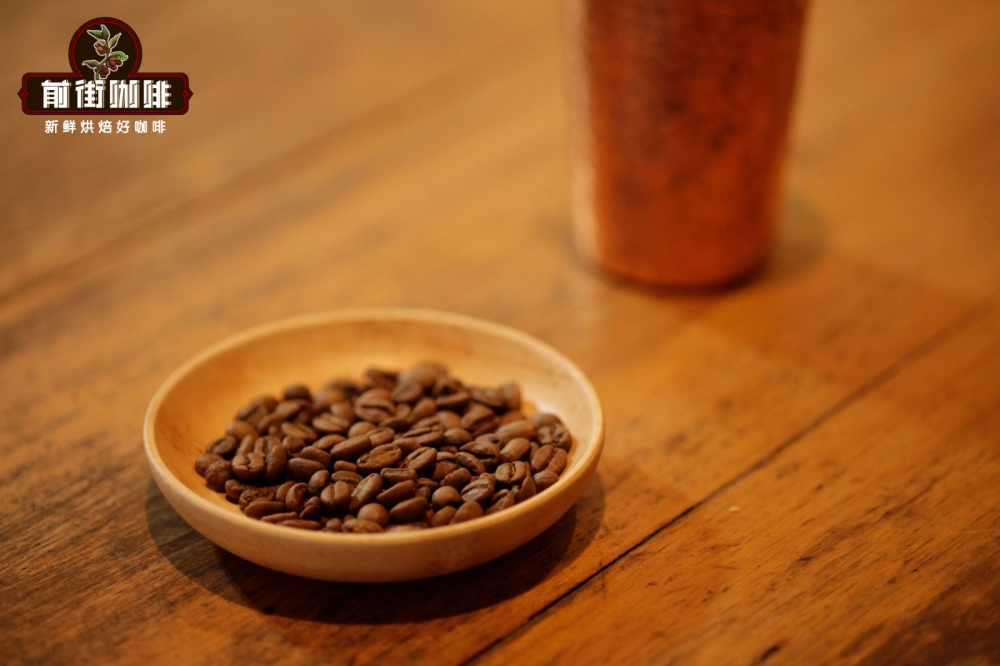
Of course, there are some customers who need help grinding powder in front of the street, which doesn't matter, but Qianjie has to warn: if the coffee beans are ground ahead of time, there is no need to raise the beans, because in the process of transportation, the pressure caused by carbon dioxide in the package can also make the coffee flavor mellow, so when you receive the coffee powder, you can immediately make a cup of coffee drink. But the coffee powder needs to be brewed in time, because the coffee powder oxidizes more quickly after contact with the air, that is to say, the flavor of the coffee will dissipate more quickly, and the flavor of the coffee is not so good. Therefore, Qianjie suggests buying whole beans, grinding and flushing now, so that we can better taste the flavor of coffee.
Parameters for brewing coffee from Yega Chuefei on Qianjie Street:
Qianjie selected: V60 filter cup, using the uniform flow rate characteristics of V60 filter cup, can better highlight the level of coffee flavor, water temperature 90 ℃, using higher water temperature to extract coffee aroma substances, water powder ratio at 1:15, powder content 15g, grinding degree (China 20 standard sieve pass rate of 80%).
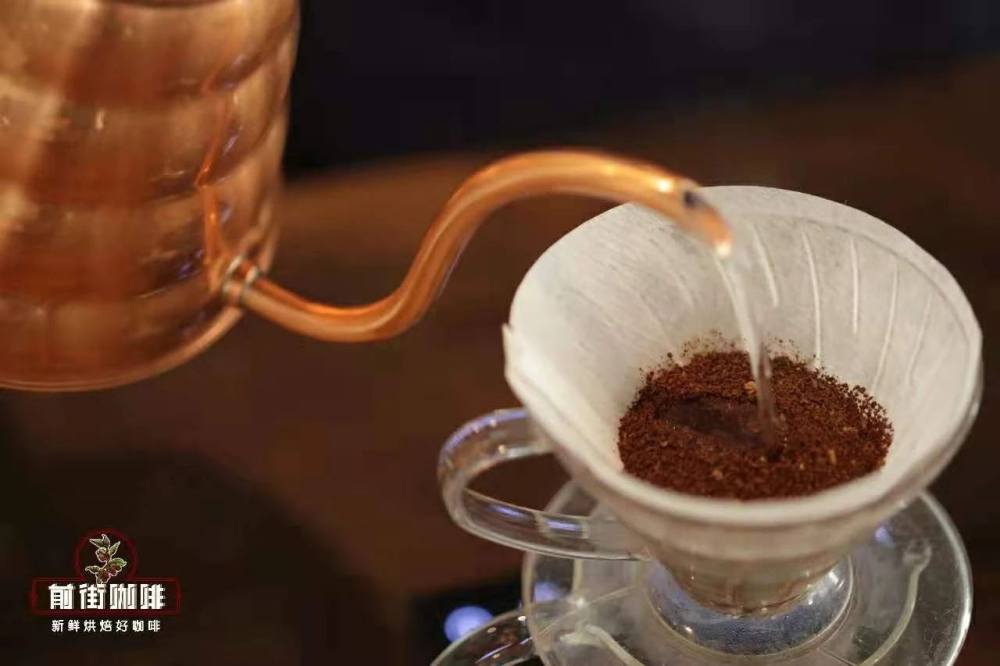
The use of segmented extraction, with twice the amount of coffee powder water for steaming, that is, 30 grams of water for 30 seconds, and the reason for the need for steaming process is to make coffee powder can discharge the internal carbon dioxide gas, so that the latter stage of the extraction is better stable. When the small water is injected around the circle to 125 grams, the injection will be stopped until 225 grams, then the filter cup will be removed after the dripping of the filter cup, and the extraction time will be 2 minutes 39 grams. Next, pick up and shake the whole cup of coffee, then pour it into the cup and taste it.
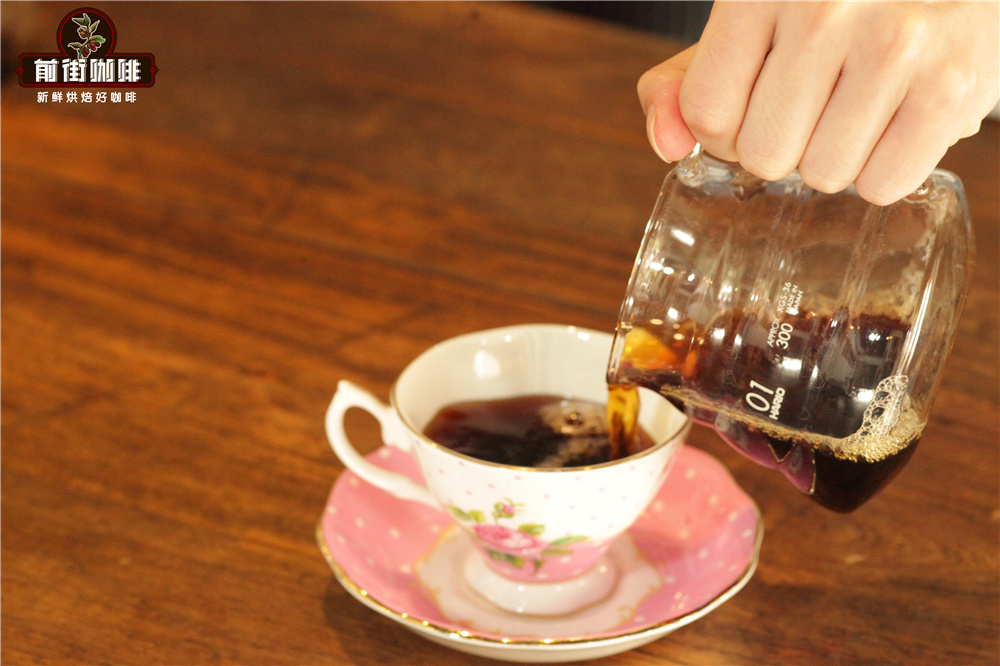
Washed Yega Fischer coffee flavor: fruity, fresh jasmine, berries, citric acid, pineapple, apple, smooth taste, clear, lingering finish.
Sunlit Shiffei Red Cherry Coffee flavors: berries, lemons, strawberries, fermented wine, rich sweetness and fermented feeling.
Professional coffee knowledge exchange more coffee bean information please follow the coffee workshop (Wechat official account cafe_style)
For more boutique coffee beans, please add private Qianjie coffee on Wechat. WeChat account: qjcoffeex
Important Notice :
前街咖啡 FrontStreet Coffee has moved to new addredd:
FrontStreet Coffee Address: 315,Donghua East Road,GuangZhou
Tel:020 38364473
- Prev

Introduction to the variety characteristics of the description treatment method of Ethiopian Sidamo Lion King flavor coffee beans
Sidamo Lion King Coffee is produced by Xilisha Cooperative near Dilla town. The cooperative was founded in 1976 and is now a member of the SCFCU of the Sidamo Farmers' Cooperative Union. We have screened the coffee again, and the selected batch has excellent flavor, which tends to be honey, citrus and coffee flowers. The coffee in Sidamo is very flavored.
- Next

Description of characteristics and Flavor of Burundian Coffee beans introduction to the name of Grinding Manor
Burundian Coffee Bean production country: Burundian Grade: AA,FWS planting area: Buyendi Brand: Buyendi treatment method: wet treatment appearance: 1ddeband 300grGramy 16-18SCR Variety: Jackson bourbon Note: due to ethnic separatism, the chaos of Burundian coffee has been going on for a long time, with a large number of raw beans mixed with the old and new, making this coffee.
Related
- Detailed explanation of Jadeite planting Land in Panamanian Jadeite Manor introduction to the grading system of Jadeite competitive bidding, Red bid, Green bid and Rose Summer
- Story of Coffee planting in Brenka region of Costa Rica Stonehenge Manor anaerobic heavy honey treatment of flavor mouth
- What's on the barrel of Blue Mountain Coffee beans?
- Can American coffee also pull flowers? How to use hot American style to pull out a good-looking pattern?
- Can you make a cold extract with coffee beans? What is the right proportion for cold-extracted coffee formula?
- Indonesian PWN Gold Mandrine Coffee Origin Features Flavor How to Chong? Mandolin coffee is American.
- A brief introduction to the flavor characteristics of Brazilian yellow bourbon coffee beans
- What is the effect of different water quality on the flavor of cold-extracted coffee? What kind of water is best for brewing coffee?
- Why do you think of Rose Summer whenever you mention Panamanian coffee?
- Introduction to the characteristics of authentic blue mountain coffee bean producing areas? What is the CIB Coffee Authority in Jamaica?

